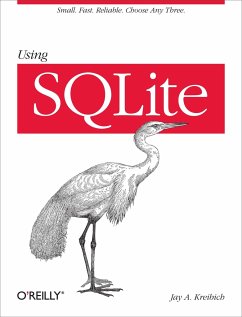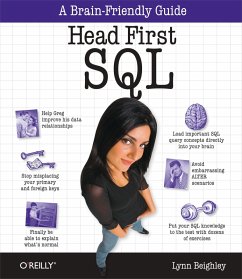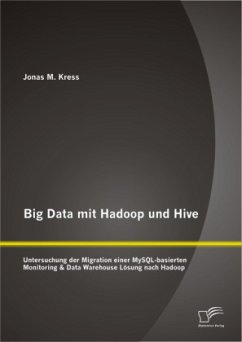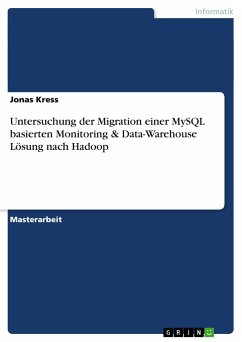Nicht lieferbar
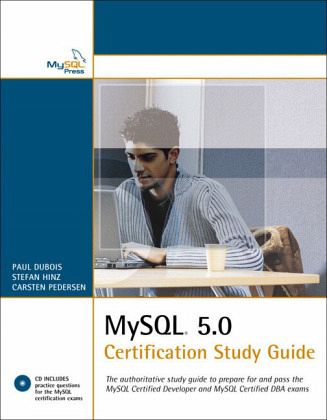
MySQL 5 Certification Study Guide
Versandkostenfrei!
Nicht lieferbar
This is the official guide to passing the two MySQL certification tests for MySQL 5, the long-awaited major revision of MySQL. It includes a voucher for 25 percent off either exam-a $50 value! The number of MySQL certification exams taken has doubled in the last six months.
Certcities.com lists the MySQL certification as one of the top 10 certifications to grow in 2005. MySQL professionals need a way to distinguish themselves from the vast majority of database administrators and developers. With more than 4 million active installations, MySQL is the world's most popular open-source database. Known for its speed, reliability and case of use, MySQL has become a low-cost alternative to expensive database systems such as Oracle, IBM and Microsoft. MySQL AB has aggressively improved the feature set of MySQL with MySQL 5, making it more suitable for enterprise-level applications and uses. The MySQL certification tests, available at over 3,000 PearsonVUE testing centers, is a key component of this enterprise growth strategy, establishing a base level of skills for database users, administrators and programmers.
The MySQL Core Certification is aimed at the database user who wants proof of his or her abilities in such fundamental areas as SQL, data entry and maintenance, and data extraction. The MySQL Professional Certification test is designed for the advanced user who wants to prove his or her knowledge in such areas as database management, installation, security, disaster prevention and optimization. Both tests are thoroughly covered in the MySQL Certification Study Guide. Written by Paul DuBois, the leading author of books on MySQL topics, and reviewed for technical accuracy by MySQL AB, this book is the fastest, most reliable way for MySQL users, developers, and administrators to prepare for either of the MySQL tests.
Product Description
This is the official guide to passing the two MySQL certification tests for MySQL 5, the long-awaited major revision of MySQL. The number of MySQL certification exams taken has doubled in the last six months.
Certcities.com lists the MySQL certification as one of the top 10 certifications to grow in 2005. MySQL professionals need a way to distinguish themselves from the vast majority of database administrators and developers. With more than 4 million active installations, MySQL is the world's most popular open-source database. Known for its speed, reliability and case of use, MySQL has become a low-cost alternative to expensive database systems such as Oracle, IBM and Microsoft. MySQL AB has aggressively improved the feature set of MySQL with MySQL 5, making it more suitable for enterprise-level applications and uses. The MySQL certification tests, available at over 3,000 PearsonVUE testing centers, is a key component of this enterprise growth strategy, establishing a base level of skills for database users, administrators and programmers.
The MySQL Core Certification is aimed at the database user who wants proof of his or her abilities in such fundamental areas as SQL, data entry and maintenance, and data extraction. The MySQL Professional Certification test is designed for the advanced user who wants to prove his or her knowledge in such areas as database management, installation, security, disaster prevention and optimization. Both tests are thoroughly covered in the MySQL 5.0 Certification Study Guide. Written by Paul DuBois, the leading author of books on MySQL topics, and reviewed for technical accuracy by MySQL AB, this book is the fastest, most reliable way for MySQL users, developers, and administrators to prepare for either of the MySQL tests.
Backcover
This is the official guide to passing the two MySQL certification tests for MySQL 5, the long-awaited major revision of MySQL. The number of MySQL certification exams taken has doubled in the last six months.
Certcities.com lists the MySQL certification as one of the top 10 certifications to grow in 2005. MySQL professionals need a way to distinguish themselves from the vast majority of database administrators and developers. With more than 4 million active installations, MySQL is the world's most popular open-source database. Known for its speed, reliability and case of use, MySQL has become a low-cost alternative to expensive database systems such as Oracle, IBM and Microsoft. MySQL AB has aggressively improved the feature set of MySQL with MySQL 5, making it more suitable for enterprise-level applications and uses. The MySQL certification tests, available at over 3,000 PearsonVUE testing centers, is a key component of this enterprise growth strategy, establishing a base level of skills for database users, administrators and programmers.
The MySQL Core Certification is aimed at the database user who wants proof of his or her abilities in such fundamental areas as SQL, data entry and maintenance, and data extraction. The MySQL Professional Certification test is designed for the advanced user who wants to prove his or her knowledge in such areas as database management, installation, security, disaster prevention and optimization. Both tests are thoroughly covered in the MySQL 5.0 Certification Study Guide. Written by Paul DuBois, the leading author of books on MySQL topics, and reviewed for technical accuracy by MySQL AB, this book is the fastest, most reliable way for MySQL users, developers, and administrators to prepare for either of the MySQL tests.
Introduction.
About This Book.
Sample Exercises
Other Required Reading
Manuals
Sample Data
Study Guide Errata
Certification Information at www.mysql.com
The MySQL Certification Candidate Guide
The Certification Mailing List
Conventions Used in This Book
Running MySQL on Microsoft Windows
About the Exams
Registering for an Exam
Going to the Exam
Taking the Exam
Reading Questions
Answering Questions
After the Exam
Retaking Exams
Warning
Interpreting DESCRIBE Output
Sample Tables
MYSQL DEVELOPER EXAMS.
MySQL Developer I Exam.
1. Client/Server Concepts.
General MySQL Architecture
Invoking Client Programs
General Command Option Syntax
Connection Parameter Options
Using Option Files
Selecting a Default Database
Establishing a Connection with a GUI Client
Server SQL Modes
2. The mysql Client Program.
Using mysql Interactively
Statement Terminators
The mysql Prompts
Using Editing Keys in mysql
Using Script Files with mysql
mysql Output Formats
Client Commands and SQL Statements
Using Server-Side Help
Using the --safe-updates Option
3. MySQL Query Browser.
MySQL Query Browser Capabilities
Using MySQL Query Browser
Using the Query Window
Entering Queries
The Result Area
The Script Editor
Stored Routine Management
The Object and Information Browsers
The MySQL Table Editor
Connection Management
Using the Connection Dialog
Editing Connection Profiles
The Options Dialog
4. MySQL Connectors.
MySQL Client Interfaces
MySQL Connector/ODBC
MySQL Connector/J
MySQL Connector/NET
5. Data Types.
Data Type Overview
Numeric Data Types
Integer Data Types
Floating-Point Data Types
Fixed-Point Data Types
The BIT Data Type
String Data Types
Character Set Support
Non-Binary String Data Types: _CHAR, VARCHAR, TEXT
Binary String Data Types: BINARY, VARBINARY, BLOB
The ENUM and SET Data Types
Temporal Data Types
The DATE, TIME, DATETIME, and YEAR Data Types
The TIMESTAMP Data Type
Per-Connection Time Zone Support
Column Attributes
Numeric Column Attributes
String Column Attributes
General Column Attributes
Using the AUTO_INCREMENT Column Attribute
Handling Missing or Invalid Data Values
Handling Missing Values
Handling Invalid Values in Non-Strict Mode
Handling Invalid Values in Strict Mode
Enabling Additional Input Data Restrictions
Overriding Input Data Restrictions
6. Identifiers.
Identifier Syntax
Case Sensitivity of Identifiers
Using Qualified Names
Using Reserved Words as Identifiers
7. Databases.
Database Properties
Creating Databases
Altering Databases
Dropping Databases
Obtaining Database Metadata
8. Tables and Indexes.
Table Properties
Creating Tables
Creating Tables Using an Explicit Definition
Specifying the Storage Engine for a Table
Creating Tables Based on Existing Tables
Using TEMPORARY Tables
Altering Tables
Adding and Dropping Columns
Modifying Existing Columns
Renaming a Table
Specifying Multiple Table Alterations
Dropping Tables
Emptying Tables
Indexes
Types of Indexes
Creating Indexes
Choosing an Indexing Algorithm
Dropping Indexes
Obtaining Table and Index Metadata
9. Querying for Data.
Using SELECT to Retrieve Data
Specifying Which Columns to Retrieve
Renaming Retrieved Columns
Identifying the Database Containing a Table
Specifying Which Rows to Retrieve
Using ORDER BY to Sort Query Results
The Natural Sort Order of Data Types
Limiting a Selection Using LIMIT
Using DISTINCT to Eliminate Duplicates
Aggregating Results
The MIN() and MAX() Aggregate Functions
The SUM() and AVG() Aggregate Functions
The COUNT() Aggregate Function
The GROUP_CONCAT() Function
Aggregation for NULL Values or Empty Sets
Grouping Results
GROUP BY and Sorting
Selecting Groups with HAVING
Using GROUP BY and WITH ROLLUP
Using UNION
10. SQL Expressions.
Components of SQL Expressions
&n
Certcities.com lists the MySQL certification as one of the top 10 certifications to grow in 2005. MySQL professionals need a way to distinguish themselves from the vast majority of database administrators and developers. With more than 4 million active installations, MySQL is the world's most popular open-source database. Known for its speed, reliability and case of use, MySQL has become a low-cost alternative to expensive database systems such as Oracle, IBM and Microsoft. MySQL AB has aggressively improved the feature set of MySQL with MySQL 5, making it more suitable for enterprise-level applications and uses. The MySQL certification tests, available at over 3,000 PearsonVUE testing centers, is a key component of this enterprise growth strategy, establishing a base level of skills for database users, administrators and programmers.
The MySQL Core Certification is aimed at the database user who wants proof of his or her abilities in such fundamental areas as SQL, data entry and maintenance, and data extraction. The MySQL Professional Certification test is designed for the advanced user who wants to prove his or her knowledge in such areas as database management, installation, security, disaster prevention and optimization. Both tests are thoroughly covered in the MySQL Certification Study Guide. Written by Paul DuBois, the leading author of books on MySQL topics, and reviewed for technical accuracy by MySQL AB, this book is the fastest, most reliable way for MySQL users, developers, and administrators to prepare for either of the MySQL tests.
Product Description
This is the official guide to passing the two MySQL certification tests for MySQL 5, the long-awaited major revision of MySQL. The number of MySQL certification exams taken has doubled in the last six months.
Certcities.com lists the MySQL certification as one of the top 10 certifications to grow in 2005. MySQL professionals need a way to distinguish themselves from the vast majority of database administrators and developers. With more than 4 million active installations, MySQL is the world's most popular open-source database. Known for its speed, reliability and case of use, MySQL has become a low-cost alternative to expensive database systems such as Oracle, IBM and Microsoft. MySQL AB has aggressively improved the feature set of MySQL with MySQL 5, making it more suitable for enterprise-level applications and uses. The MySQL certification tests, available at over 3,000 PearsonVUE testing centers, is a key component of this enterprise growth strategy, establishing a base level of skills for database users, administrators and programmers.
The MySQL Core Certification is aimed at the database user who wants proof of his or her abilities in such fundamental areas as SQL, data entry and maintenance, and data extraction. The MySQL Professional Certification test is designed for the advanced user who wants to prove his or her knowledge in such areas as database management, installation, security, disaster prevention and optimization. Both tests are thoroughly covered in the MySQL 5.0 Certification Study Guide. Written by Paul DuBois, the leading author of books on MySQL topics, and reviewed for technical accuracy by MySQL AB, this book is the fastest, most reliable way for MySQL users, developers, and administrators to prepare for either of the MySQL tests.
Backcover
This is the official guide to passing the two MySQL certification tests for MySQL 5, the long-awaited major revision of MySQL. The number of MySQL certification exams taken has doubled in the last six months.
Certcities.com lists the MySQL certification as one of the top 10 certifications to grow in 2005. MySQL professionals need a way to distinguish themselves from the vast majority of database administrators and developers. With more than 4 million active installations, MySQL is the world's most popular open-source database. Known for its speed, reliability and case of use, MySQL has become a low-cost alternative to expensive database systems such as Oracle, IBM and Microsoft. MySQL AB has aggressively improved the feature set of MySQL with MySQL 5, making it more suitable for enterprise-level applications and uses. The MySQL certification tests, available at over 3,000 PearsonVUE testing centers, is a key component of this enterprise growth strategy, establishing a base level of skills for database users, administrators and programmers.
The MySQL Core Certification is aimed at the database user who wants proof of his or her abilities in such fundamental areas as SQL, data entry and maintenance, and data extraction. The MySQL Professional Certification test is designed for the advanced user who wants to prove his or her knowledge in such areas as database management, installation, security, disaster prevention and optimization. Both tests are thoroughly covered in the MySQL 5.0 Certification Study Guide. Written by Paul DuBois, the leading author of books on MySQL topics, and reviewed for technical accuracy by MySQL AB, this book is the fastest, most reliable way for MySQL users, developers, and administrators to prepare for either of the MySQL tests.
Introduction.
About This Book.
Sample Exercises
Other Required Reading
Manuals
Sample Data
Study Guide Errata
Certification Information at www.mysql.com
The MySQL Certification Candidate Guide
The Certification Mailing List
Conventions Used in This Book
Running MySQL on Microsoft Windows
About the Exams
Registering for an Exam
Going to the Exam
Taking the Exam
Reading Questions
Answering Questions
After the Exam
Retaking Exams
Warning
Interpreting DESCRIBE Output
Sample Tables
MYSQL DEVELOPER EXAMS.
MySQL Developer I Exam.
1. Client/Server Concepts.
General MySQL Architecture
Invoking Client Programs
General Command Option Syntax
Connection Parameter Options
Using Option Files
Selecting a Default Database
Establishing a Connection with a GUI Client
Server SQL Modes
2. The mysql Client Program.
Using mysql Interactively
Statement Terminators
The mysql Prompts
Using Editing Keys in mysql
Using Script Files with mysql
mysql Output Formats
Client Commands and SQL Statements
Using Server-Side Help
Using the --safe-updates Option
3. MySQL Query Browser.
MySQL Query Browser Capabilities
Using MySQL Query Browser
Using the Query Window
Entering Queries
The Result Area
The Script Editor
Stored Routine Management
The Object and Information Browsers
The MySQL Table Editor
Connection Management
Using the Connection Dialog
Editing Connection Profiles
The Options Dialog
4. MySQL Connectors.
MySQL Client Interfaces
MySQL Connector/ODBC
MySQL Connector/J
MySQL Connector/NET
5. Data Types.
Data Type Overview
Numeric Data Types
Integer Data Types
Floating-Point Data Types
Fixed-Point Data Types
The BIT Data Type
String Data Types
Character Set Support
Non-Binary String Data Types: _CHAR, VARCHAR, TEXT
Binary String Data Types: BINARY, VARBINARY, BLOB
The ENUM and SET Data Types
Temporal Data Types
The DATE, TIME, DATETIME, and YEAR Data Types
The TIMESTAMP Data Type
Per-Connection Time Zone Support
Column Attributes
Numeric Column Attributes
String Column Attributes
General Column Attributes
Using the AUTO_INCREMENT Column Attribute
Handling Missing or Invalid Data Values
Handling Missing Values
Handling Invalid Values in Non-Strict Mode
Handling Invalid Values in Strict Mode
Enabling Additional Input Data Restrictions
Overriding Input Data Restrictions
6. Identifiers.
Identifier Syntax
Case Sensitivity of Identifiers
Using Qualified Names
Using Reserved Words as Identifiers
7. Databases.
Database Properties
Creating Databases
Altering Databases
Dropping Databases
Obtaining Database Metadata
8. Tables and Indexes.
Table Properties
Creating Tables
Creating Tables Using an Explicit Definition
Specifying the Storage Engine for a Table
Creating Tables Based on Existing Tables
Using TEMPORARY Tables
Altering Tables
Adding and Dropping Columns
Modifying Existing Columns
Renaming a Table
Specifying Multiple Table Alterations
Dropping Tables
Emptying Tables
Indexes
Types of Indexes
Creating Indexes
Choosing an Indexing Algorithm
Dropping Indexes
Obtaining Table and Index Metadata
9. Querying for Data.
Using SELECT to Retrieve Data
Specifying Which Columns to Retrieve
Renaming Retrieved Columns
Identifying the Database Containing a Table
Specifying Which Rows to Retrieve
Using ORDER BY to Sort Query Results
The Natural Sort Order of Data Types
Limiting a Selection Using LIMIT
Using DISTINCT to Eliminate Duplicates
Aggregating Results
The MIN() and MAX() Aggregate Functions
The SUM() and AVG() Aggregate Functions
The COUNT() Aggregate Function
The GROUP_CONCAT() Function
Aggregation for NULL Values or Empty Sets
Grouping Results
GROUP BY and Sorting
Selecting Groups with HAVING
Using GROUP BY and WITH ROLLUP
Using UNION
10. SQL Expressions.
Components of SQL Expressions
&n
This is the official guide to passing the two MySQL certification tests for MySQL 5, the long-awaited major revision of MySQL. The number of MySQL certification exams taken has doubled in the last six months.
Certcities.com lists the MySQL certification as one of the top 10 certifications to grow in 2005. MySQL professionals need a way to distinguish themselves from the vast majority of database administrators and developers. With more than 4 million active installations, MySQL is the world's most popular open-source database. Known for its speed, reliability and case of use, MySQL has become a low-cost alternative to expensive database systems such as Oracle, IBM and Microsoft. MySQL AB has aggressively improved the feature set of MySQL with MySQL 5, making it more suitable for enterprise-level applications and uses. The MySQL certification tests, available at over 3,000 PearsonVUE testing centers, is a key component of this enterprise growth strategy, establishing a base level of skills for database users, administrators and programmers.
The MySQL Core Certification is aimed at the database user who wants proof of his or her abilities in such fundamental areas as SQL, data entry and maintenance, and data extraction. The MySQL Professional Certification test is designed for the advanced user who wants to prove his or her knowledge in such areas as database management, installation, security, disaster prevention and optimization. Both tests are thoroughly covered in the MySQL 5.0 Certification Study Guide . Written by Paul DuBois , the leading author of books on MySQL topics, and reviewed for technical accuracy by MySQL AB, this book is the fastest, most reliable way for MySQL users, developers, and administrators to prepare for either of the MySQL tests.
Certcities.com lists the MySQL certification as one of the top 10 certifications to grow in 2005. MySQL professionals need a way to distinguish themselves from the vast majority of database administrators and developers. With more than 4 million active installations, MySQL is the world's most popular open-source database. Known for its speed, reliability and case of use, MySQL has become a low-cost alternative to expensive database systems such as Oracle, IBM and Microsoft. MySQL AB has aggressively improved the feature set of MySQL with MySQL 5, making it more suitable for enterprise-level applications and uses. The MySQL certification tests, available at over 3,000 PearsonVUE testing centers, is a key component of this enterprise growth strategy, establishing a base level of skills for database users, administrators and programmers.
The MySQL Core Certification is aimed at the database user who wants proof of his or her abilities in such fundamental areas as SQL, data entry and maintenance, and data extraction. The MySQL Professional Certification test is designed for the advanced user who wants to prove his or her knowledge in such areas as database management, installation, security, disaster prevention and optimization. Both tests are thoroughly covered in the MySQL 5.0 Certification Study Guide . Written by Paul DuBois , the leading author of books on MySQL topics, and reviewed for technical accuracy by MySQL AB, this book is the fastest, most reliable way for MySQL users, developers, and administrators to prepare for either of the MySQL tests.




